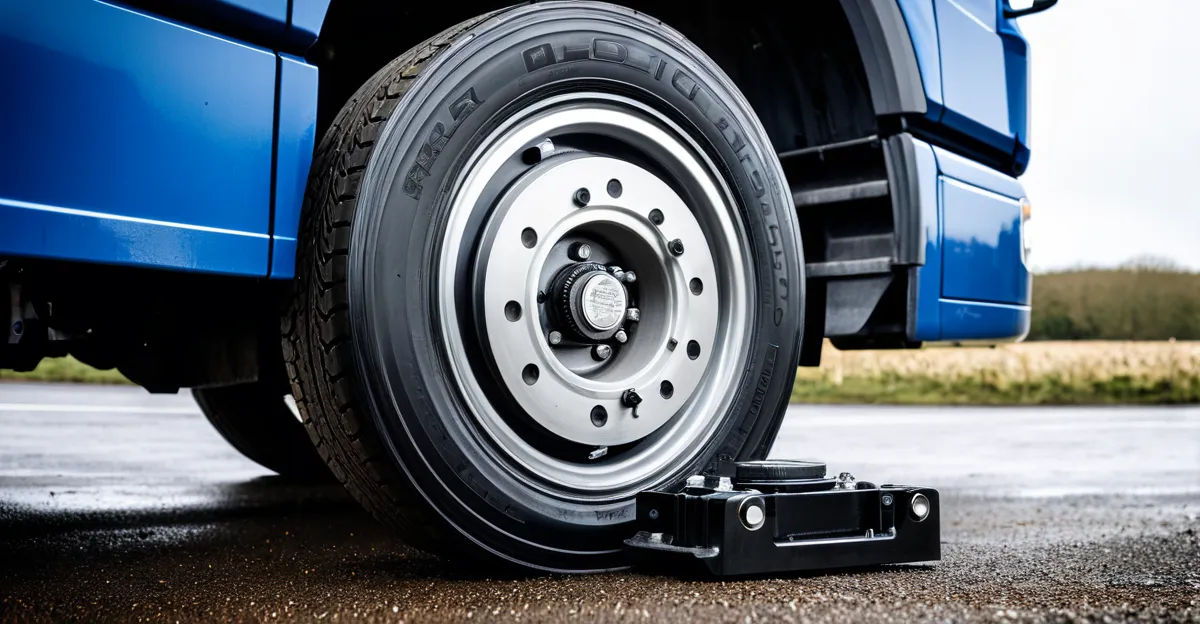Essential Maintenance Procedures for Hydraulic Brakes on UK Commercial Trucks
Ensuring the hydraulic brake maintenance on UK commercial trucks is crucial for safety and performance. The process begins with a thorough inspection of brake fluid levels and condition. Always check for leaks in the hydraulic lines, as even small leaks can compromise brake efficiency. Next, examine brake pads and discs for wear; replace them if thickness is below manufacturer-recommended limits.
A step-by-step guide includes:
Additional reading : Ultimate headlight alignment guide for classic british cars: ensure uk road compliance with ease
- Drain and replace brake fluid using the correct grade recommended for UK commercial trucks.
- Inspect all hoses for cracks or bulges.
- Clean brake calipers and lubricate sliding components to prevent sticking.
- Test brake pedal feel and adjust if necessary.
Tools required include fluid bleeder kits, torque wrenches, and brake pad measuring devices. Keep safety gloves and eye protection handy to avoid contact with hydraulic fluid.
Maintenance intervals vary, but heavy UK commercial vehicles typically require brake system checks every 20,000 miles or six months, whichever comes first. Regular upkeep not only extends component lifespan but ensures optimal braking performance, critical for the demanding conditions faced by UK commercial trucks.
Also to read : Upgrade your uk adventure vehicle: a comprehensive diy manual for installing a custom suspension lift kit
UK-Specific Regulations and Standards for Hydraulic Brake Maintenance
Understanding UK regulations is crucial for maintaining hydraulic brake systems, especially in commercial vehicles. The Driver and Vehicle Standards Agency (DVSA) oversees brake system standards, ensuring vehicles meet safety requirements under the UK Department for Transport guidelines. These standards specify minimum performance levels for brake components, including hydraulic systems, to prevent accidents and ensure road safety.
Maintenance routines must align with legal compliance, mandating regular inspections and servicing intervals. Brake pad thickness, fluid condition, and system responsiveness are routinely checked. Documentation of each maintenance activity is not just good practice but a legal obligation, aiding traceability and accountability.
Commercial fleets face stricter brake system standards, obliging operators to adhere to rigorous safety and reporting protocols. Failure to comply can result in penalties, vehicle off-road status, or worse, safety hazards. These regulations emphasize proactive care, requiring professional technicians to verify hydraulic brake system integrity during inspections.
Meeting these standards benefits both vehicle owners and public safety, reducing the risk of brake failure. Familiarity with UK-specific regulations helps fleet managers streamline maintenance processes while ensuring full regulatory compliance.
Troubleshooting Common Hydraulic Brake Issues in UK Fleets
Understanding brake troubleshooting is essential for maintaining safety and performance in UK fleets. Common issues include symptoms such as brake wear, brake fluid leaks, and pressure loss in the hydraulic system. Brake wear typically presents as decreased stopping power or unusual noises, signaling worn pads or discs. Leaks are identified by visible fluid drops beneath the vehicle or a spongy brake pedal feel, which indicates loss of hydraulic pressure.
Root causes often involve worn brake pads, damaged seals, or faulty master cylinders. Repair strategies depend on the specific problem: replacing brake pads or discs addresses wear, while leaks necessitate seal replacement and thorough fluid system checks. Pressure loss might require bleeding the brake lines to remove air bubbles that impair hydraulic function. Each vehicle model may have unique issues, so refer to the manufacturer’s guidance for model-specific troubleshooting and repair strategies.
Consulting a professional brake specialist is advisable when repairs exceed routine maintenance or symptoms persist. Specialists offer expert diagnostics and ensure compliance with UK safety standards, enhancing fleet reliability and road safety. Employing precise brake troubleshooting techniques minimizes downtime and repair costs, crucial for efficient UK fleet operations.
Preventative Maintenance and Cost-Saving Strategies
Preventative maintenance is essential to maximize cost savings and extend brake lifespan on UK trucks. Implementing a tailored preventative maintenance schedule allows operators to identify wear patterns early and address minor issues before they become costly repairs. This approach significantly reduces unexpected downtime by keeping brake components in optimal condition.
Evidence-based techniques, such as regular inspections of brake pads, discs, and fluid levels, contribute directly to brake lifespan extension. For instance, monitoring brake temperature and adjusting driving habits can prevent premature wear. Consistent lubrication of moving parts and cleaning brake assemblies also improve the performance and durability of braking systems.
Proactive care controls maintenance costs by shifting the focus from reactive repairs to planned interventions. This reduces labor expenses and parts replacement frequency, resulting in tangible cost savings. Moreover, these strategies help maintain compliance with UK transport regulations, ensuring safety without overextending budgets.
Adopting these preventative maintenance practices not only enhances reliability but also provides peace of mind through predictable vehicle performance and lower long-term expenses. For a comprehensive guide on optimizing your maintenance routine, explore our detailed information on truck care strategies.
Expert Recommendations, Tips, and Quality Assurance
Ensuring your products meet quality assurance standards is critical for safety and performance, especially within UK environments. Expert tips recommend adherence to established UK industry standards, which include thorough safety checks and routine maintenance. For professional advice, always consult guidelines that emphasize the importance of regular inspections and servicing.
Critical maintenance steps often involve routine checks such as verifying the integrity of electrical components, confirming secure connections, and assessing wear and tear on parts prone to damage. Following these steps prevents failures and extends product lifespan. Visual aids, like illustrative diagrams, can clearly demonstrate these key maintenance tasks, aiding users in proper execution.
When selecting recommended brands or products, prioritize those well-known for compliance with UK regulations and strong quality assurance records. This choice ensures that you invest in reliable equipment that meets professional expectations. Employing checklists derived from UK industry standards guarantees comprehensive assessments, reducing risks and enhancing operational efficiency.
These expert tips empower users to maintain high standards consistently, grounded in professional advice trusted across UK industries.
How Robot Hoovers Handle Different Floor Types
Understanding how a robot hoover adapts to various floor types is crucial when considering one for your home. Most robot hoovers come equipped with sensors and adaptive cleaning heads designed specifically to transition seamlessly between surfaces like hardwood, tile, carpet, and rugs.
When on hardwood floors or tiles, robot hoovers typically operate at a lower suction level to avoid scattering light debris, yet still effectively pick up dust and dirt. On the other hand, for carpeted floors, the device automatically increases suction power to draw out particles deeply embedded in fibers. This smart adjustment ensures thorough cleaning without manual intervention.
Some models feature multi-surface brushes that gently agitate carpet fibers, loosening dirt, while being soft enough not to damage delicate flooring. Certain robot hoovers also include mapping technology to identify floor types and optimize cleaning routines accordingly, enhancing efficiency.
It’s important to select a robot hoover designed with your home’s specific flooring in mind. For example, if your house primarily features thick carpets, choose one with strong suction and brush systems built for deep cleaning. With these capabilities, a robot hoover offers practical, hands-free maintenance across various floor types while saving you time and effort.



